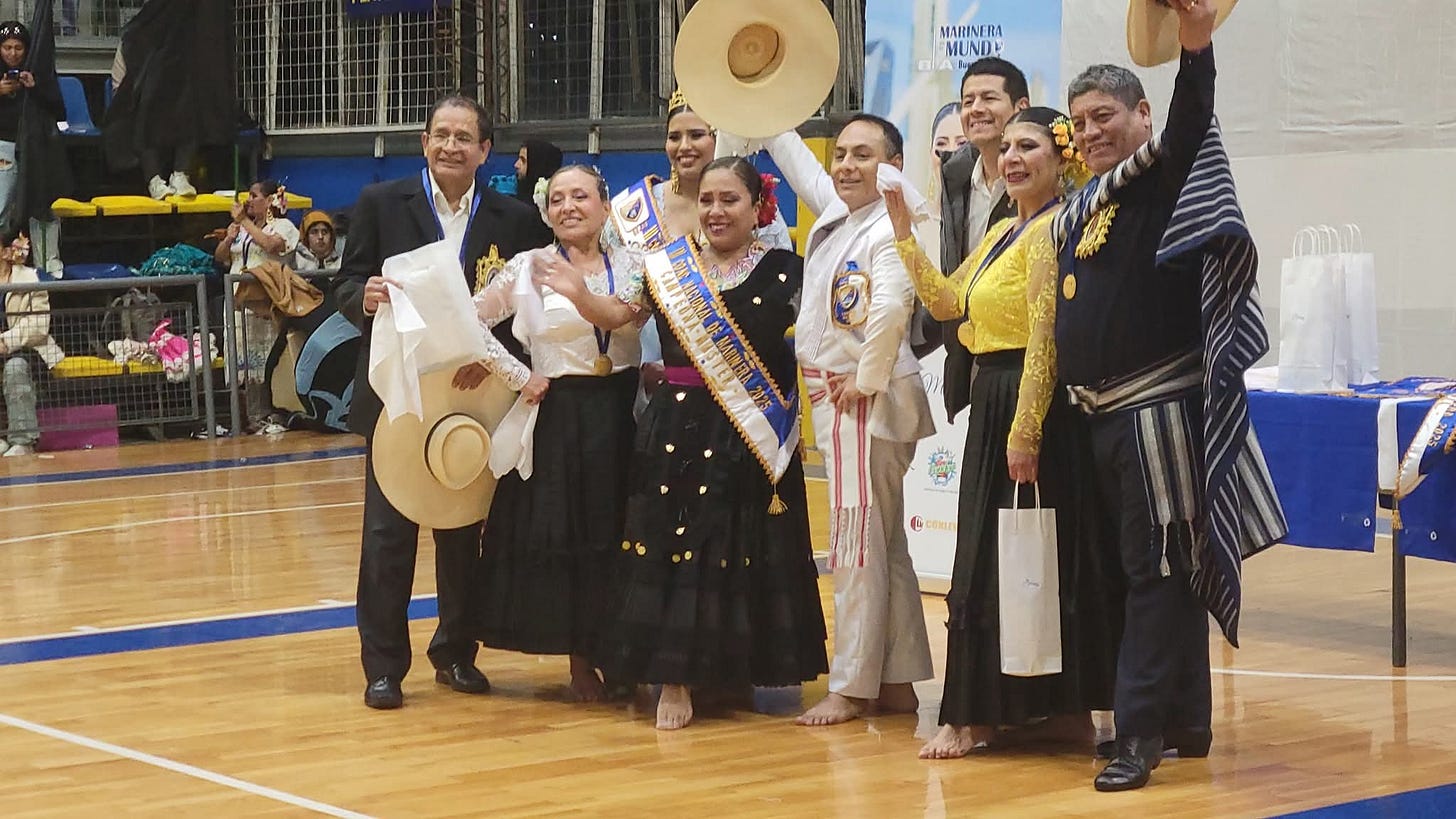For those of you who are new to me, allow me to introduce my “other half”, my husband of twenty years, Henry. He’s a professor of folklore dance, primarily folklore dances of Andean cultures - Peru at its center, and his heritage, but also throughout the rest of South America. His particular specialty is the marinera, generally considered the national dance of Peru. More particularly, it’s the marinera norteña, from northern Peru, in and around his home city of Trujillo. He also has his own dance company, Q'Jantu Compañía de Folklore.
The marinera is generally considered Peru’s national dance - elegant, flirtatious, and unmistakably expressive. Performed in pairs, it’s a stylized courtship built around precise footwork, flowing outfits, and the signature use of white handkerchiefs, or pañuelos. There’s a playful back-and-forth between the dancers, who tease and circle each other, each step part of a wordless conversation. In the northern style - marinera norteña - the man usually wears a hat and shoes, while the woman often dances barefoot, sometimes even on hot pavement. It’s seen as a mark of strength and pride, though in practice, men sometimes go barefoot too.
The music brings its own kind of energy: guitars, cajón, and brass instruments drive the rhythm, matching the dancers beat for beat. The dance features in competitions and festivals all across Peru, with Trujillo’s Festival de Marinera standing as the most prominent.
Its roots go back to the zamacueca, a colonial-era dance shaped by Spanish, African, and indigenous influences. In 1879, writer Abelardo Gamarra gave it the name “marinera,” honoring the Peruvian Navy during the War of the Pacific. Over time, it’s grown into a symbol of national identity - especially along the coast. The marinera blends European structure, African rhythm, and Andean character into something entirely Peruvian: graceful, lively, and grounded in history.
Yesterday was a big championship here in the Buenos Aires for the Peruvian community, as competitors of all ages and levels of proficiency went for the grand prize, the annual championship, Marinera en el Mundo, Buenos Aires. He and one of his dance partners, Maruja, competed in the professors category. And, they won!





